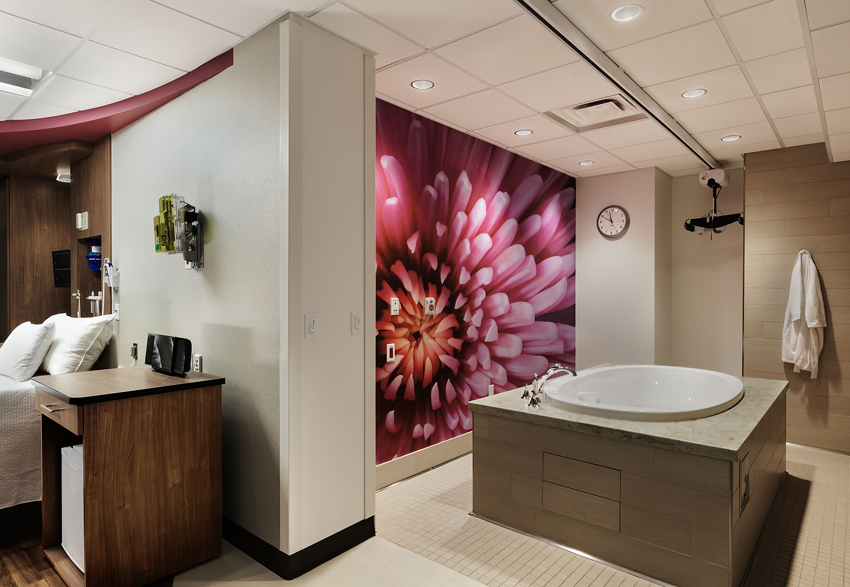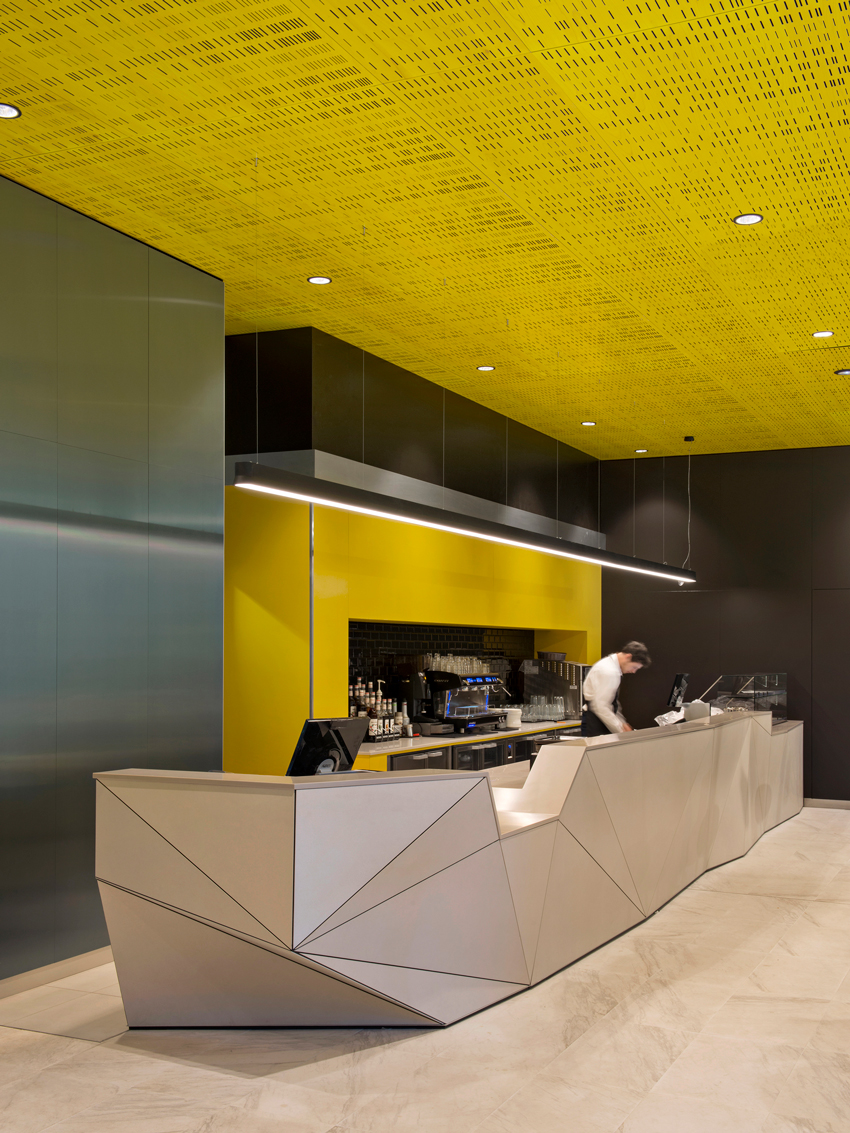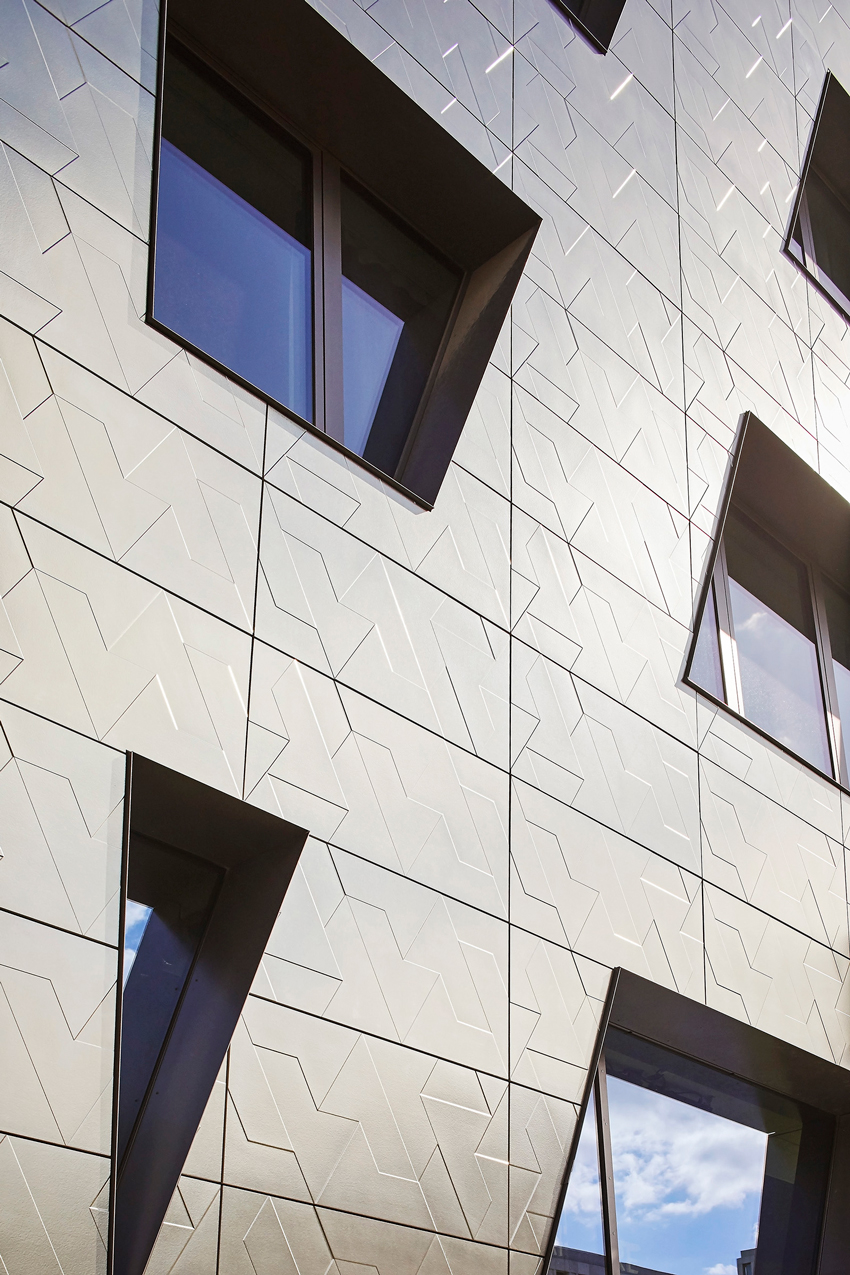Innovations That Drive Sustainable Ceramic Material Selection
Wellness: Antibacterial and Self-cleaning Surfaces
Microbes, bacteria, and fungi are microscopic forms of life that have both beneficial and destructive ability to impact human well-being. In the past five years, material scientists have been developing new products that prevent mold and inhibit bacterial growth in food areas and health-care facilities. According to the Center For Disease Control, on any given day, about one in 25 hospital patients has at least one health-care-associated infection. Addressing this crisis has led to new coatings on ceramic products. Antibacterial additives can be incorporated into ceramic glazing and cement-based products such as tile grout and paving tiles. Even though many ceramic tiles have a nonporous surface, providing an important benefit in keeping bacteria from penetrating surfaces, bacteria can still multiply and grow.
Some manufacturers are introducing silver ion coatings during the firing process to activate a protective shield that is not dependent on UV rays as a catalyst. The process does not alter or whiten the original color of the ceramic surface (unlike other technologies) and can be applied onto any color tiles and slabs, including darker shades. These new products are providing alternatives to flooring not only in residential and health-care settings but also in public spaces, airports, condominiums, shopping centers, and schools.
To substantiate the antimicrobial claims, manufacturers use independent laboratories that are highly specialized at carrying out the ISO 22196 standard for evaluating nonporous surfaces of products and the ASTM E3031-15 standard, which is specifically focused on the complex surfaces of glazing compositions on ceramic tile, particularly those that include silver additives. Antimicrobial additives can be effective against a range of bacteria, such as Escherichia Coli, Staphylococcus Aureus, and Klebsiella Pneumoniae. The active ingredients in the ceramic surface are always active and prevent the growth of bacteria. This interrupts the reproductive ability of the surface, keeping that surface cleaner for longer. Regular maintenance and cleaning should not include wax products, as they will create a film that can block the contact between the tile and bacteria. A few examples highlight the versatile applications of these innovative ceramics.

Photo: © Ballogg Photography/HDR Architecture
Antibacterial porcelain tile surrounds the labor and delivery birthing tub at the The Mother Baby Center in St. Paul, Minnesota.
Health Care
In Minnesota, HDR Architecture employed many sustainable strategies at The Mother Baby Center in St. Paul, designed by architect Julie Roberts. This innovative care center enables mothers, babies, and families to stay together and experience the highest level of coordinated care. Antibacterial tile is used in the dramatic entrance flooring as well as throughout the facility in the patient toilet rooms, floors, and walls. The tile also surrounds the labor and delivery birthing tub, providing concealed sterility in an area designed to be comforting.

Photo: © Nicolas Mathéus/Lea Ceramiche
This porcelain-clad bar is a sculpture composed of thin porcelain geometric panels.
Restaurants
Antibacterial ceramics were installed for floors, the bar surfaces, and even part of the wall as large slab “wallpaper” in three dining areas at Les Dune. This new technological center of the Société Générale in Val de Fontenay in the eastern suburbs of Paris is a complex of offices distributed over five buildings that will eventually be able to accommodate up to 5,000 employees. Starting from the impressive size of the spaces, the challenge for Patrick Norguet, a French architect and designer, was to combine and manage the flow of so many people to create an atmosphere of sociability, intimacy, and comfort during meals.
The restaurant surfaces ensure an environment that is healthier, safer, and easy to maintain. The ceramic walls were customized through the use of digital printing on laminated porcelain stoneware. The porcelain-clad bar is a sculpture composed of thin porcelain geometric panels. The slabs are only 3 millimeters (1⁄8 inch) thick with irregular slices, covering the entire surface of the volumetric shape. The large expanse of the flooring product features a play of horizontal lines that interact with light and furniture, giving vibration and personality to the surface in a three-dimensional wave pattern. In addition to meeting aesthetic criteria, this sustainable installation has numerous sustainable material benefits.

Photo courtesy of Studio Libeskind
A self-cleaning, three-dimensional fractal surface was custom designed and placed across the facade of this Berlin residential complex designed by Studio Libeskind.
Exterior Maintenance: Self-Cleaning Surfaces
Material scientists have also developed coatings for exterior porcelain panels. A new residential complex in the heart of Berlin is clad in three-dimensional, geometric-patterned porcelain stoneware that is not only beautiful but also has a surprising impact on air quality and maintenance. Designed by Studio Libeskind, the tiles cover the surface with a technological advancement designed to self-clean and aid in air purification. Around 3,600 pieces of tile were used for the facade, with the majority of tiles custom cut using linear and water-jet cutting machinery. The three-dimensional surface is custom designed to flow across the varous sides of the facade. The continuous surface extends to the inside of balcony walls to express the continuity of the design. The semi-reflective charcoal facade changes and glows according to different times of the day and weather conditions, adding to the streetscape atmospheric experience.
The porcelain panels are manufactured with a titanium dioxide coating that when exposed to UV rays create a hydrophobic surface, one that repels water. A chemical and biological reaction breaks down organic substances and pollutants on the porcelain panel’s surface. Therefore, rainwater becomes more effective in washing away dirt and stains, reducing necessary maintenance.
Installation Makes a Difference
Design professionals have been accused of “falling in love” with new products. It is true that the lure of new finishes, textures, and sustainability attributes can be hard to resist. With the advent of new products comes the learning curve of how to adjust to new material attributes and installation requirements. A well-trained team that works together is the main ingredient of a successful building project. The design professional ensures that the chosen finishes are consistent with the goals of the project, the client’s vision, and the program and then specifies the choice of tiles, panels, adhesive or mortar installations, grout, layout, joint pattern, and the slope of the surface. The tile contractor is responsible for installation and the quality of the materials to be used as well as the conditions of the substrate. Integrated teams work together to assure that materials, schedules, and budgets are coordinated. The manufacturer works with the entire team. They will often provide engineering support as needed, particularly for large-formant porcelain panels.
Installation advances in ceramics include new tile grouts, mortars, and substrates. There is even new ceramic plank flooring that can be installed over any substrate with a liner and plastic connectors to secure the flooring.
Exterior and interior porcelain tiles and panels are more resistant and less subject to change over time than cement or natural stone paving slabs. They are acid, frost, and salt proof with moisture absorption of less than 0.5 percent. Mold-, moss-, and pest-resistant durable outdoor ceramics provide new surface textures and designs for decks, pools, patios, and terraces. Exterior outdoor paving tiles, as thin as 20 millimeters (3⁄4 inch) thick, can be dry laid directly onto the laying bed—the most common being grass, gravel, or sand—in conjunction with a support or on a level screed, such as concrete, with adhesive.
According to Bettiga, the National Tile Contractors Association (NTCA), along with ceramic tile and installation material manufacturers, recognized that there was a need for new standards for these new ceramic products. They defined the size of large-format tiles to be a minimum of 1-square-meter (3-square-foot) tiles/panels/slabs. In 2017, ANSI A137.3 and A108.19 standards were developed to address installation and material qualities of these relatively new products. In addition, NTCA collaborated with the Ceramic Tile Education Foundation, the Tile Contractors Association of America, the International Union of Bricklayers and Allied Craftworkers, and manufacturers in the United States and developed an advanced certification for tile installers. Bettiga recommends that specifiers require that projects use certified installers or can demonstrate successful installations in past projects. The language in these standards and certification often uses the terms “gauged” porcelain tile/panels/slabs that is also referred to as “thin porcelain.”









